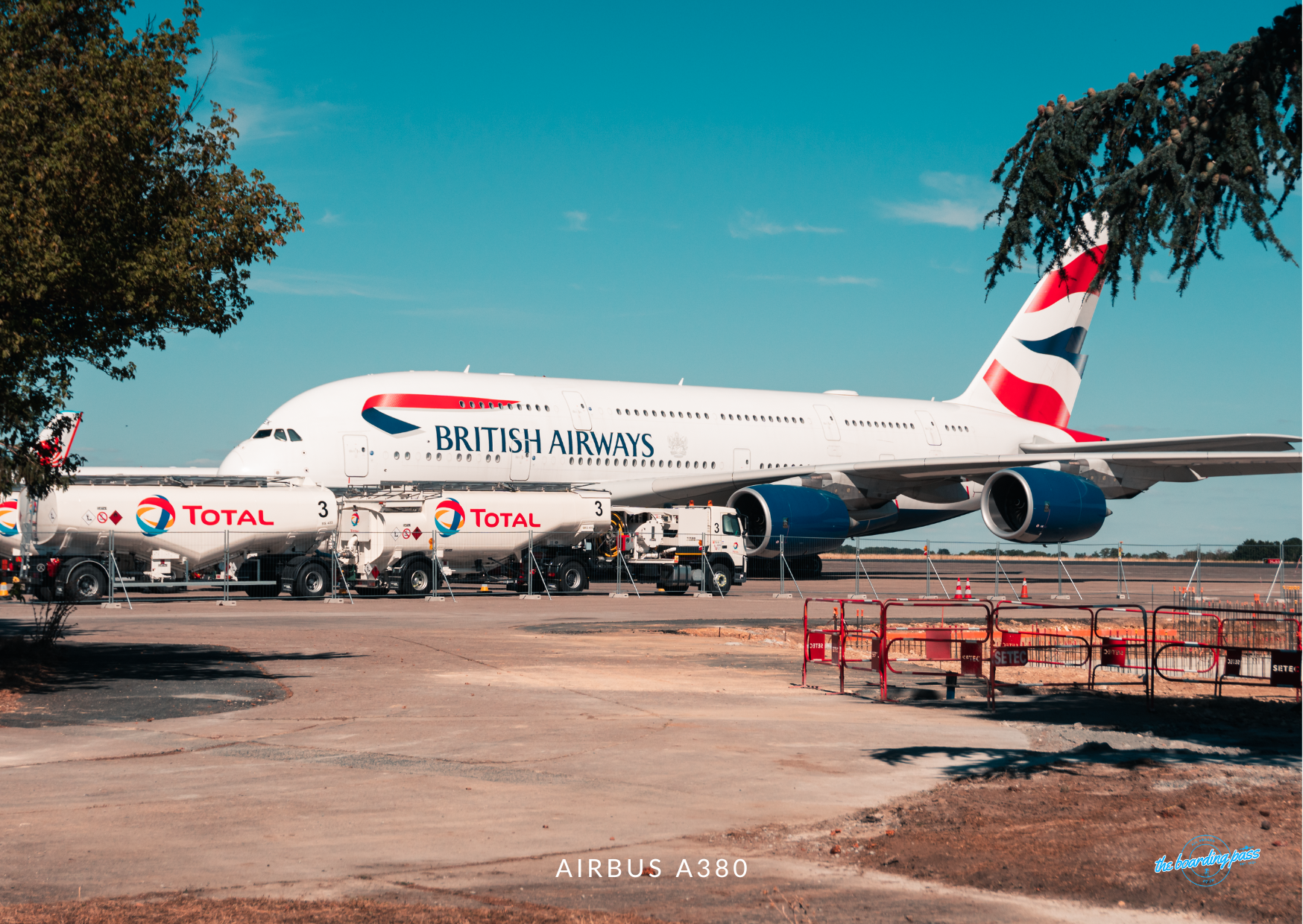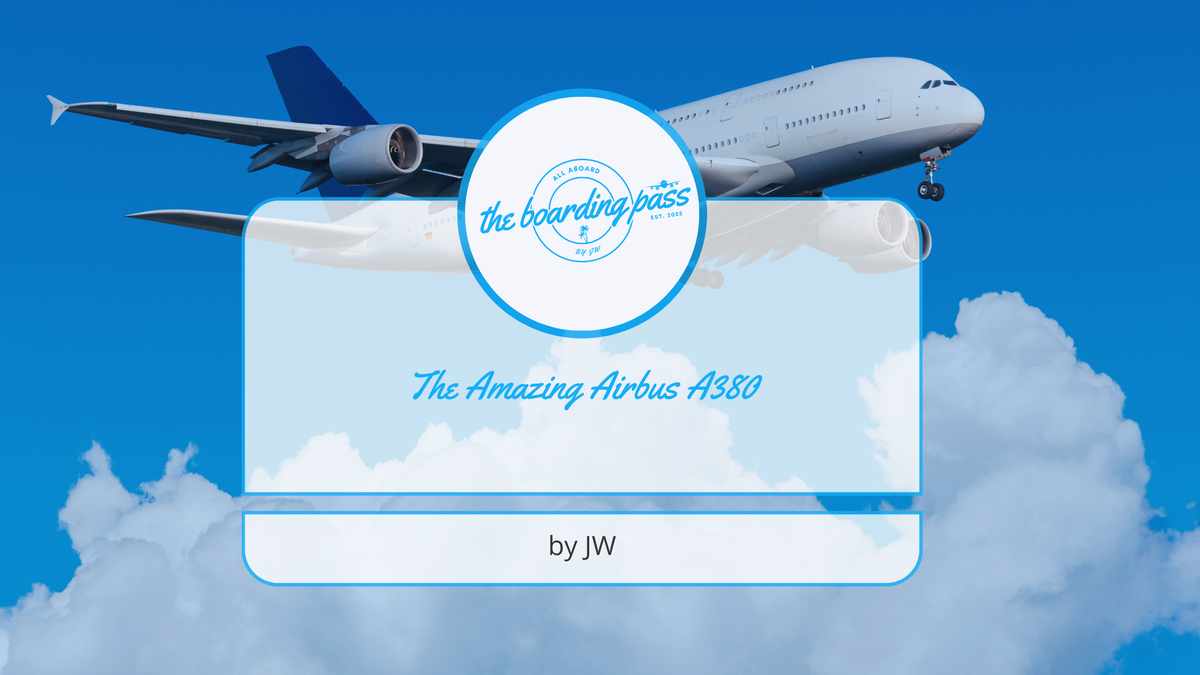There are some planes you see every day that just feel… different. Living under the Heathrow flightpath means we get our fair share of traffic, but nothing stops us in our tracks quite like the Airbus A380. It doesn’t roar past, it glides, almost lazily, as if its double-deck wings were born for the clouds. We’ve not yet flown on one (bucket list!), but watching it sail above is pure magic.
So what makes the A380 so mesmerising? For starters, it’s the world’s largest passenger jet, the only full-length double-deck airliner. Stretching 73 metres nose to tail and nearly 80 metres across the wings, this gentle giant can carry over 500 people in typical layouts, or a staggering 850 in an all-economy squeeze. It’s powered by either Engine Alliance GP7200s or Rolls-Royce Trent 900s, and for years it was aviation’s moonshot: bold, complicated, beautiful.
The Brains Behind the Beauty

The A380 began life in 1988 when Airbus engineer Jean Roeder pushed the idea of a superjumbo that could eclipse the Boeing 747. As the programme grew, Charles Champion took over as Program Manager and guided it through its toughest engineering years until 2006. At Airbus UK, John Roberts served as Chief Engineer, leading on key design and production work, particularly on those enormous wings.
The first prototype was assembled in Toulouse, France, where the A380 was officially unveiled in January 2005. On 27 April that year, test pilot Jacques Rosay took the controls for the maiden flight from Toulouse, a historic moment for aviation fans everywhere.
A Turbulent Journey
For all its grandeur, the A380’s story wasn’t smooth. Development was dogged by wiring glitches, software mismatches across different Airbus sites, and ballooning costs. The final price tag hit around $25 billion — more than double the initial estimate. Production delays meant airlines waited years for delivery, and while passengers adored it, airlines struggled to make the economics work on anything but the busiest routes.
By the time production ended in 2021, just 251 aircraft had ever been built. Today (October 2025), 186 A380s remain in service, with 36 in storage and 24 already scrapped. Emirates is the undisputed king of the fleet, with 121 still flying. There are no new orders, no new builds, no revival plans.
A380 Fuel Consumption Details
The A380's fuel burn rate is about 10 grams per nautical mile per passenger, with total fuel capacity nearly 310,406 litres (82,000 gallons).
Typically, the jet consumes fuel at around 11 to 12 tons per hour, which is consistent among various sources and reflects an average level of fuel use in cruise rather than during takeoff or climb phases which can be higher.
Converted to per minute, this means roughly 183 to 200 kilograms or approximately 230 to 250 liters of aviation fuel every minute.
Legacy of a Legend
The A380 might have been a commercial headache, but to travellers, spotters, and dreamers like us, it’s pure theatre. A flying palace that defied gravity and gave us two decks of wonder. Every time one sails over our heads, we feel like kids again — necks craned, eyes wide, in awe of human engineering.
✈️ Have you ever flown on the mighty A380? Or is it, like for us, still on your travel wish list?
✨ Love planes, travel, and a little aviation magic?
Subscribe to The Boarding Pass and join us under the flightpath. From iconic jets to hidden city gems, your window seat adventure starts here.

